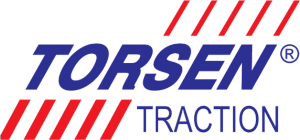Part1
As you might imagine, a very commonly asked question around these parts is: how does a Torsen® differential work? While this might seem like something that ought to be in the FAQ (which touches on it), there really isn’t enough space there to delve too deep into the topic. But I did say this was going to be the “simple” version, right? That’s true, but mostly because I’m not going to get into the math behind it. But stay with me – it’ll make sense.
The Basics
You may have assumed that understanding a helical gear differential is inherently difficult. Fundamentally, however, the basic principle is really quite simple. Many of the people that I’ve spoken with are so convinced that it is above their head, that they blind themselves to the simplicity. The important thing to understand is this: it is a friction device. There is a lot of stuff on the internet talking about worm wheels and back driving, etc. You should ignore all of that. In actual practice, it does not come into play. Instead, friction is what is important.
For any type of limited slip differential (LSD), the basic intent is to generate internal friction. This is true whether it uses a helical gear design, clutch plates, even a g-rotor pump. It is friction within the differential that limits wheel spin. It does the actual limiting that the term “Limited Slip” refers to. Friction is also why the differential can allow more torque to transfer to the tire with better traction. By providing spin resistance to one tire, the other tire can receive more drive torque than it otherwise could. Thus, more torque goes to the higher traction tire. It’s just friction – that’s all.
The Challenge
This does lead to an interesting situation though. It means that we’re trying to create friction – on purpose – while we’re trying to reduce it from every other part of the driveline. An LSD is typically the only oil-lubricated part of a car that is intentionally trying to create friction. Keep in mind that the differential exists in a system with other components, such as the ring & pinion gearing and various axle bearings. These other parts require proper lubrication to survive. As a result, having suitable lubrication that reduces friction for those parts is important. So, choosing the correct lubricant for the system is important.
This adds to the challenge of generating enough friction within the differential to do what it needs to do. Recently, vehicle manufacturers started developing even lower-friction lubricants, making it especially challenging. That means that these sorts of lubricants will further reduce differential limited slip performance, sometimes referred to as “locking effect”. Differential designers have to make up the difference in other ways. In a Torsen, that usually comes from adjusting gear geometry in the design phase. Sometimes, adjusting the thrust washers to suit helps. But, at the end of the day, all the designer is trying to do is create and manage friction in a useful way. That’s pretty basic, isn’t it?
